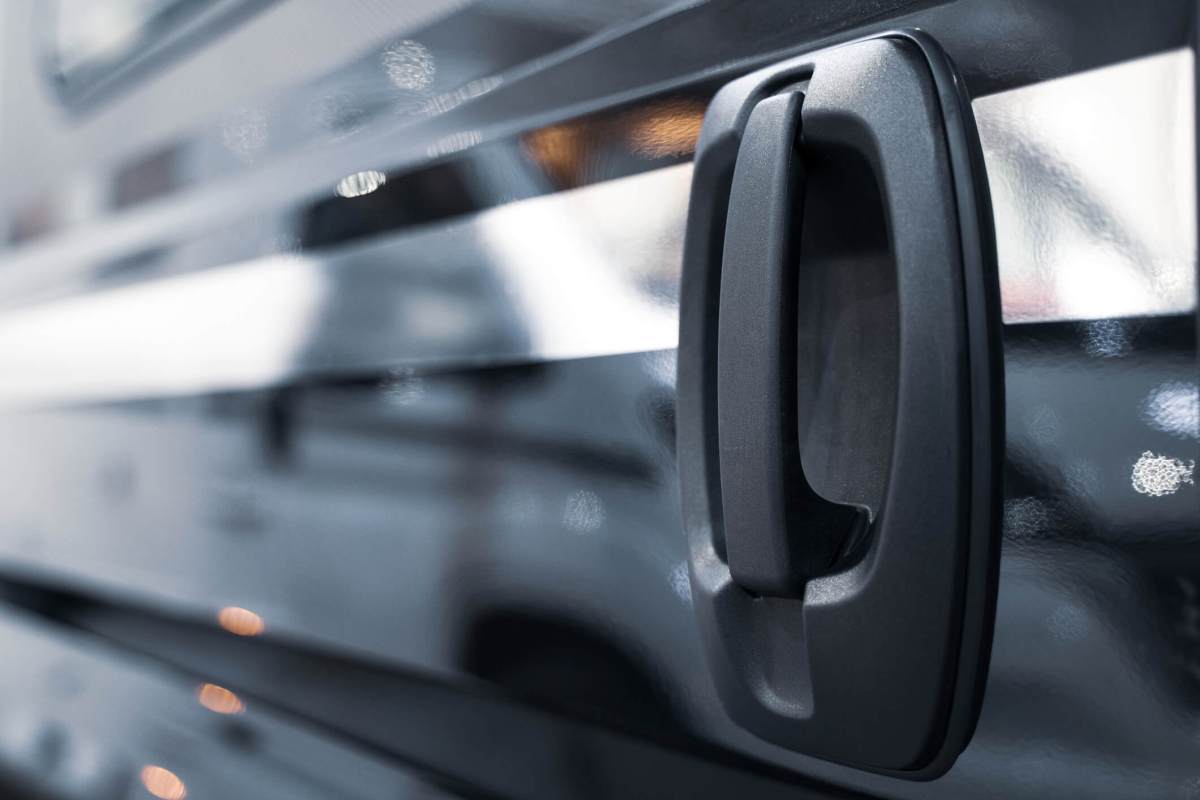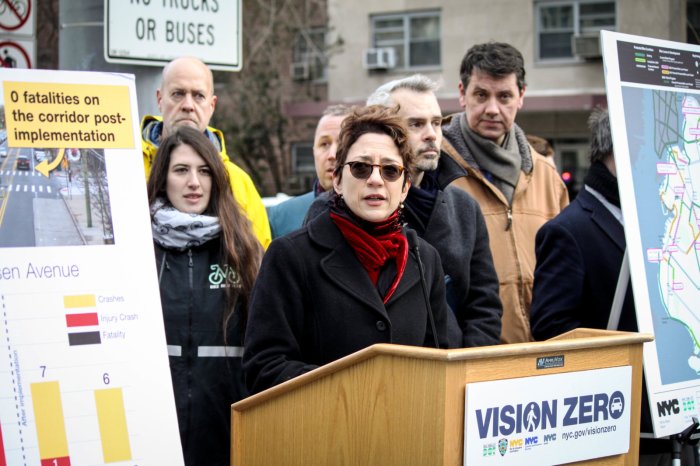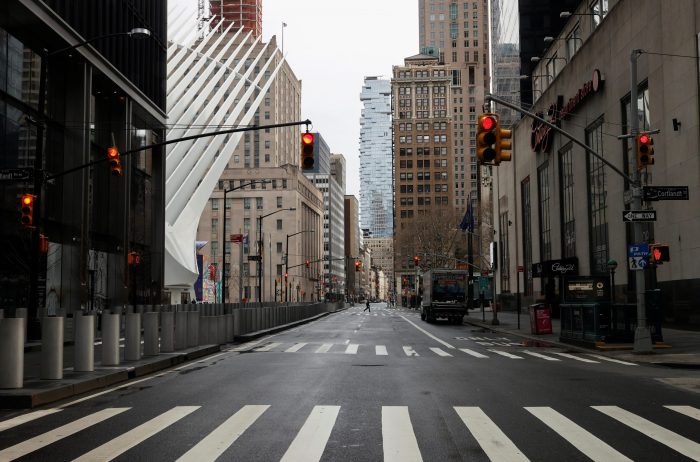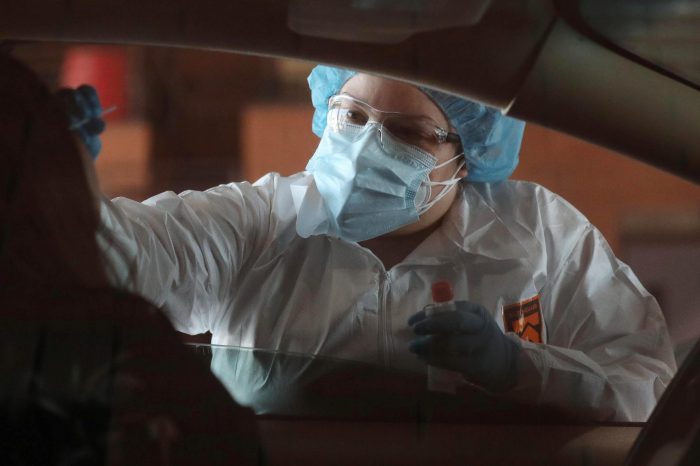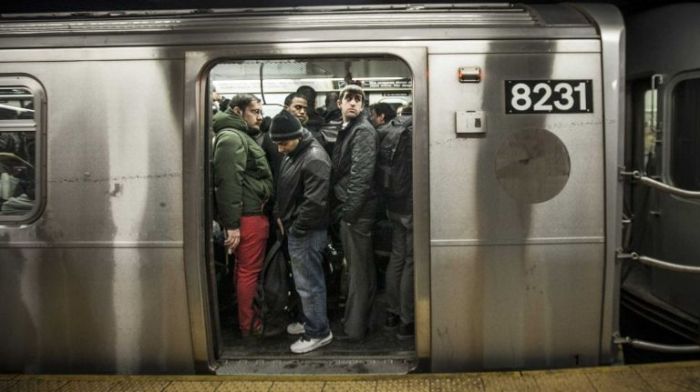Every New Yorker has witnessed it firsthand: a big truck blocks a street or parks in a bus or bike lane. This all-too-common occurrence is not only a nuisance, but also a safety hazard. For cyclists, it can be an especially hazardous scenario: making your way down a bike lane on a commercial street, a truck up ahead is making deliveries to a local grocer. Because no curbside space is available, the truck driver has chosen to instead double-park – blocking the bike lane.
The cyclist fully stops, and is then forced to move left into a crowded traffic lane, where risky conflicts — with both passing cars going in same direction and even oncoming traffic — are greatly increased. Drivers and bus riders also know the frustration that the same single double-parked truck can cause — the delays can cascade for blocks, creating traffic back-ups and misery.
As a regular cyclist, driver, bus rider -and- New York City’s Transportation Commissioner, I get it – and so that is why I have made the dramatic reduction of such interactions on our streets among my top priorities. We know that daily situations like this – cyclists sharing narrow space with cars, buses and trucks — have the capacity to quickly turn dangerous for the bike riders who are among our most vulnerable street users.
Of course, one of the best ways we can do that is to create protected bicycle lanes that trucks and other vehicles cannot block – and we have already committed to record production of such lanes in 2023. At the same time, we are working to continue “hardening” 20 miles of established on-street protected lanes with new barriers.
But how do we boost safety and access on other streets around the city? Enforcement against double-parking and blocked bus and bike lanes only gets us so far because many delivery companies need to do their business — and are themselves frustrated by the difficulty of accessing the curb. They factor parking tickets into the cost of doing business.
So, we must learn how to better balance the intense demand for our curbs – and so we are putting another new tool into action, as we expand curbside space for deliveries. This week, the Adams Administration announced a new online resource, building on the Mayor’s commitment to expanding engagement, including through the use of technology to reach residents unable to go to a community board or civic association meetings to connect with City agencies. Using mapping software to interact with New Yorkers, we will now find the best places to locate new neighborhood loading zones at nyc.gov/LoadingFeedback. Once there, New Yorkers can report areas where they commonly observe double parking and blocked bike and bus lanes. NYC DOT will use this information to inform where we place such zones.
Why are loading zones the solution? New Yorkers’ appetite for deliveries has grown exponentially since the pandemic, with over 2 million daily deliveries. However, the space at our curb has remained static. Adding a neighborhood loading zone can free up a parking spot or two on a single block, allowing delivery vehicles valuable curbside space during daytime hours. It’s a win-win-win: delivery vehicles sit at dedicated curb space, allowing traffic to move more quickly and efficiently – with the arrangement making the street safer for all users.
Expansion of loading zones is being done in partnership with the City Council, which recognized the intense need to increase space for deliveries. In fact, as a council member, I was proud to have chaired the Transportation Committee in 2021 when it passed Local Law 168, which required DOT to expand loading zones more aggressively – with an ambitious target of 500 new zones Citywide per year.
I can proudly report that DOT has exceeded those targets – with over 2,000 loading zones already installed since passage of that law. The new online platform allows us to build on that success and meet New Yorkers where they are. By placing a pin on an online map, New Yorkers can identify problem areas and give us comments where they think loading zones might be a useful solution, and our planners will carefully assess each request.
To be sure, hundreds more parking spots on commercial and residential streets being dedicated to daytime loading may be a source of some complaint. But in a city of three million parking spaces, we have so far given fewer than .1% of them to these new loading zones — a drop-in-the-bucket. But we already see these zones having an outsized impact, helping us tackle the attendant traffic and safety problems caused by deliveries. We know that as both our City and the demand for deliveries grow, new loading zones are a creative part of the solution – and so we encourage everyone to help us find the places where they could work best.
Rodriguez is New York City’s Transportation Commissioner.



